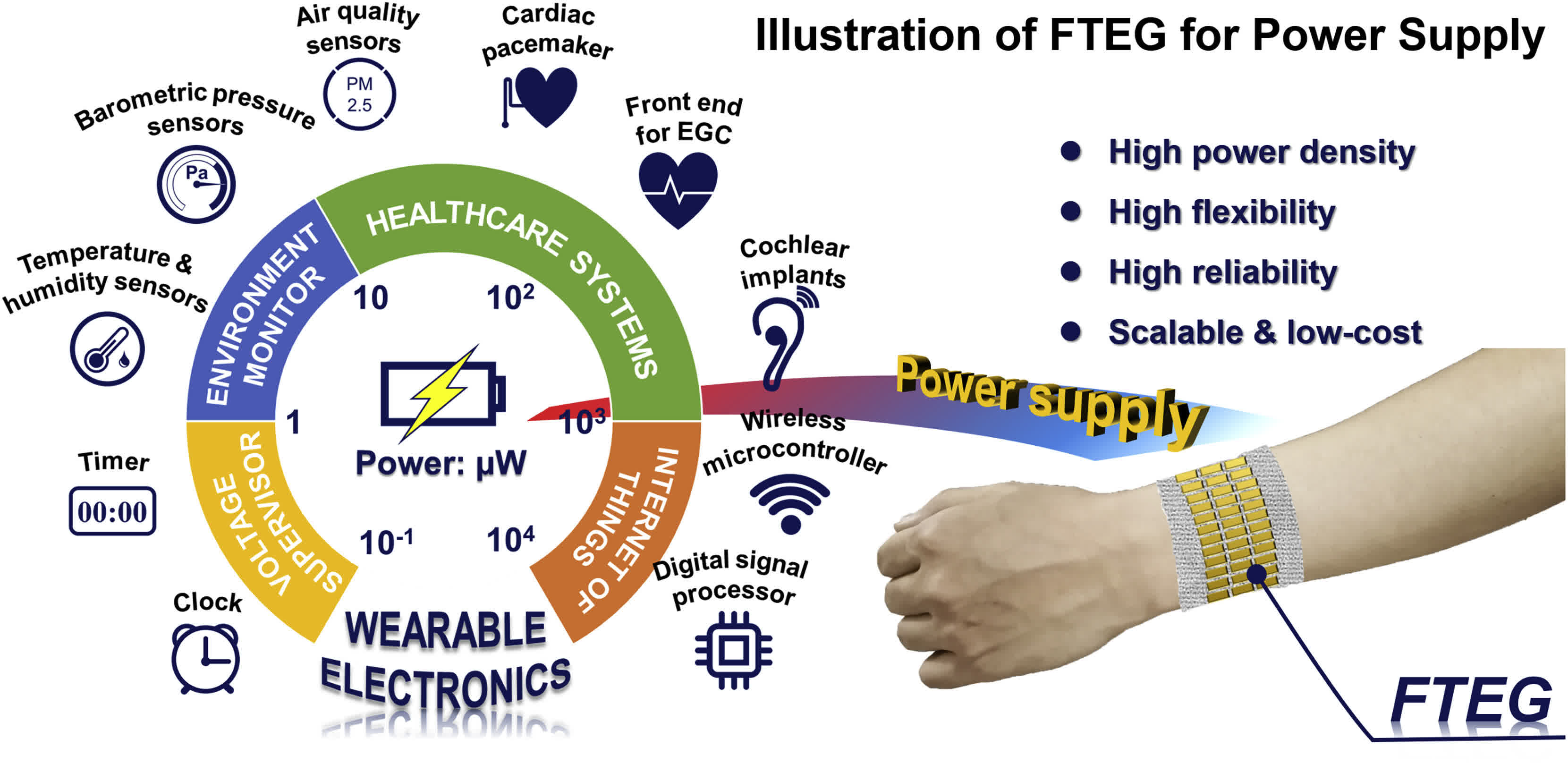Why it matters: Researchers in China have developed a thermoelectric generator (TEG) that could one day replace batteries in wearable devices like fitness trackers, smartwatches and pulse sensors. More work is needed to make it commercially viable but with wearables becoming increasingly popular, it certainly seems worth exploring.

Their prototype TEG measures 4.5 inches long by 1.1 inches wide. When wrapped around the wrist of a test subject, the device was able to leverage the difference in temperature between the wearer’s skin and the ambient environment to power an LED.
Unlike other generators that use motion to produce power, TEGs have no moving parts, so they require very little maintenance. Qian Zhang of the Harbin Institute of Technology and her colleagues modified their prototype to be more flexible and in testing, it was able to survive 10,000 repeated bends without incident.

The prototype also eliminates some of the rare metal found in commercially available TEGs, which could significantly reduce manufacturing costs at scale.
The team isn’t the first to research the idea; there are plenty of examples of others experimenting with wearable thermoelectric devices over on YouTube.
The researchers said they plan to improve on the unit’s design in order to absorb heat more efficiently. The hope is that someday, the tech may be used to power wearable electronics.
Image credit Monkey Business Images